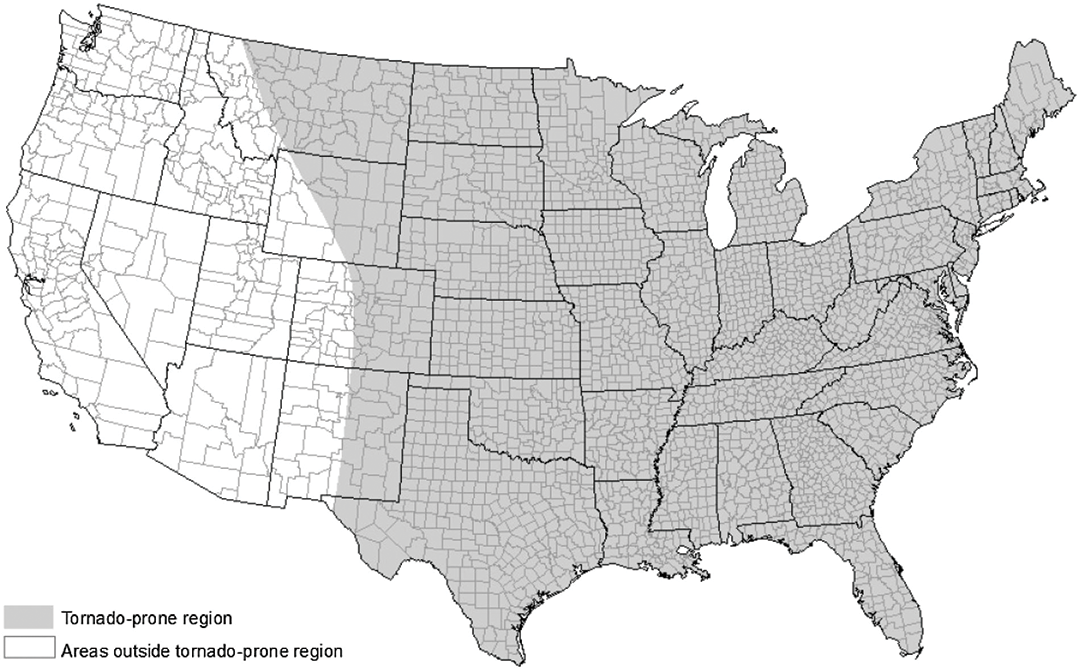
The 2022 edition of ASCE 7, “Minimum Design Loads and Associated Criteria for Buildings and Other Structures,” became available in December 2021 and replaces the 2016 edition. ASCE 7, issued by the American Society of Civil Engineers, provides information that allows designers to determine various types of loads and load combinations on buildings. The 2022 edition will be referenced in the 2024 editions of the International Building Code® and International Residential Code,® as well as the 2023 edition of the Florida Building Code.
The new edition’s wind load provisions have not changed dramatically except for the inclusion of a new chapter addressing tornado loads.
For those familiar with calculating loads in accordance with the 2016 edition, other than new tornado provisions, the transition to the 2022 edition will be easy. Changes that were made in the 2010 and 2016 editions laid an important foundation for users of the 2022 edition. For those unfamiliar with the 2010 and/or 2016 changes, see "Mapping the 2010 wind changes,” August 2010 issue, and “How do I load thee?” October 2017 issue.
The primary 2022 changes that pertain to the roofing industry include:
Following is an overview of these additions and changes. I do not address changes that only pertain to primary structural elements such as beams, columns, shear walls and diaphragms that provide overall support and stability for buildings.
Wind speeds
The basic (design) wind speeds for hurricane-prone regions are derived from modeling rather than historical records because of the infrequency of hurricanes. An updated hurricane simulation model was used to develop the wind speeds for the 2022 edition, which resulted in modest changes to the wind speed contours along the Atlantic Ocean and Gulf of Mexico. Speeds increased in parts of Texas and the Florida Panhandle. Speeds decreased in parts of Louisiana, along the Mississippi and Alabama coastlines, and in parts of the Northeast. The difference between the 2016 and 2022 basic wind speed at a specific location can be found quickly using the ASCE 7 Hazard Tool.
Wind speeds in America Samoa, Guam and Hawaii are unchanged.
For the first time, ASCE 7 includes speed for the Northern Mariana Islands, which matches that of nearby Guam. The Hawaii maps are not included in the print and online version of the 2022 edition; instead, the ASCE 7 Hazard Tool should be used to obtain Hawaii’s wind speeds. As with the 2016 edition, Hawaii’s speeds are microzoned “effective” wind speeds that include the wind speed-up effect of topography. Inclusion of topographic effects will simplify load calculations, particularly for sites with complex topography. However, designers still should examine local site conditions of finer toposcale, such as ocean promontories and local escarpments.
The 2022 edition includes new microzoned wind speed maps for the U.S. Virgin Islands and Puerto Rico. As with Hawaii, these maps include the wind speed-up effect of topography. However, these maps use a grid with a resolution of about 100 m, so most local site conditions won’t need examination by a designer. The ASCE 7 Hazard Tool also must be used to obtain these speeds. These new maps were developed after Hurricanes Irma and Maria struck these islands in 2017.
Outside the hurricane-prone regions, there are a few minor changes to the mainland wind speed contours. Alaska’s contours are unchanged.
The ASCE 7 Hazard Tool indicates special wind regions, which are mountainous areas. Site-specific values for the special wind regions in northern Colorado and Kern County, Calif., are included in the hazard tool. If site-specific values at other mainland areas are not provided, the authority having jurisdiction should be consulted for the basic wind speed.

Miscellaneous changes
A variety of other 2022 changes affect wind loads on roof systems and rooftop equipment. Most of the following have relatively minor effects on the roofing industry:
Did you know?
The Commentary is not part of the standard, but it is included with it. The Commentary consists of explanatory and supplementary material intended to assist with applying the standard’s requirements or providing a basis for the requirements.
Tornado loads
The new Chapter 32 only applies to Risk Category III and IV buildings in the tornado-prone region. Category III buildings include schools and theaters. Category IV buildings include hospitals, police stations and fire stations.
For sites located in the tornado-prone region, the ASCE 7 Hazard Tool provides tornado speeds for use with the new load criteria. The tornado return periods for each risk category are the same as the mean recurrence intervals for straight-line winds given in Chapter 26. Design tornado speeds approximately correspond to tornado intensities of EF0-EF2 on the Enhanced Fujita Scale.
Design tornado speeds also are a function of a building’s plan size and shape. A larger building has a greater design tornado speed than a smaller facility at the same geographic location. Not all Category III and IV buildings located in the tornado-prone region are required to be designed for tornadoes.
Registered design professionals must determine whether tornado loads are required. Depending on tornado speed and the ratio of it to the basic wind speed given in Chapter 26, tornado loads may or may not control over wind loads. A flow chart in Chapter 32 shows the process for determining when design for tornado loads is required. By using the chart, a designer can quickly determine when design for tornadoes is not required.
The procedures and equations for determining tornado loads are similar to the ones for determining wind loads. However, parameters used in tornado design are modified to account for unique characteristics of tornadoes and their interaction with the considered building.
The Federal Emergency Management Agency and National Institute of Standards and Technology have published a design guide regarding the new tornado load requirements. The guide is intended to help design professionals and building officials determine when a building or other structure is required to be designed for tornadoes and how to calculate design tornado loads. The guide includes a design example to illustrate application of the new tornado criteria in Chapter 32.
It is important to note neither Chapter 32 nor its Commentary address existing buildings. In my opinion, when reroofing a Category IV building in the tornado-prone region is planned, it would be prudent for the building owner to consider having a design professional design the new roof system and rooftop equipment to meet the Chapter 32 loads. It also would be prudent to consider strengthening the roof deck attachment to meet tornado loads.
The only requirement regarding wind-borne debris pertains to glazing. However, the Commentary notes wind-borne debris can penetrate other portions of a building enclosure and create a pathway for rain to enter. The Commentary references a FEMA publication for design guidance to minimize debris and/or rain penetration through roof and wall assemblies.
NIST published case studies comparing tornado and wind loads and cost implications of tornado loads on several building types (elementary school, high school, fire station, hospital) in nine cities in the tornado-prone region. The study includes discussion of potential effects on roof systems. In some cases, the tornado loads governed; in others, the increased load did not affect the number of required insulation or membrane fasteners or spacing of foam ribbon adhesive. Sometimes, the tornado loads require additional foam ribbon adhesive and/or additional fasteners. In no case did the tornado designs require the use of a different roof system or roof system components.
Get the standard
A subscription to an online version of the publication is available at asce7.online and provides a side-by-side display of the standard’s provisions and explanatory information in the Commentary. The online version also offers real-time updates when supplements or errata are issued.
In the print version, vertical lines in the margins indicate changes from 2016. However, the online version explicitly shows the changes, so it is much easier to see what changes were made. Neither the printed nor online version show the Commentary changes.
A note on glazing
The new Commentary addressing work on existing buildings located in wind-borne debris regions recommends if the existing glazing is not protected, it should be replaced with impact-resistant glazing or retrofitted with shutters in accordance with Section 26.12.3.
If existing noncompliant glazing is to remain and new building enclosure elements (such as a roof system) are going to be installed, it should be assumed the glazing can be breached, and load calculations for the new elements should include confirmation of building enclosure (enclosed vs. partially enclosed) to determine the correct internal pressure coefficient. The Commentary also recommends considering the uplift resistance of the existing roof deck and deck support structure if a roof system is replaced.
Did you know?
NRCA’s Roof Wind Designer is an online tool intended to provide users with an easy-to-use means for determining roof systems’ design wind loads for many commonly encountered building types. It can be used to determine loads based on the 2005, 2010 and 2016 editions. When it is updated for the 2022 edition, use of the tool will be a convenient alternative to performing manual calculations. To access the tool, go to roofwinddesigner.nrca.net.
THOMAS L. SMITH, AIA, RRC, F.SEI, is president of TLSmith Consulting Inc., Rockton, Ill., and a member of the ASCE 7 Task Committee on Wind Loads.
COMMENTS
Be the first to comment. Please log in to leave a comment.